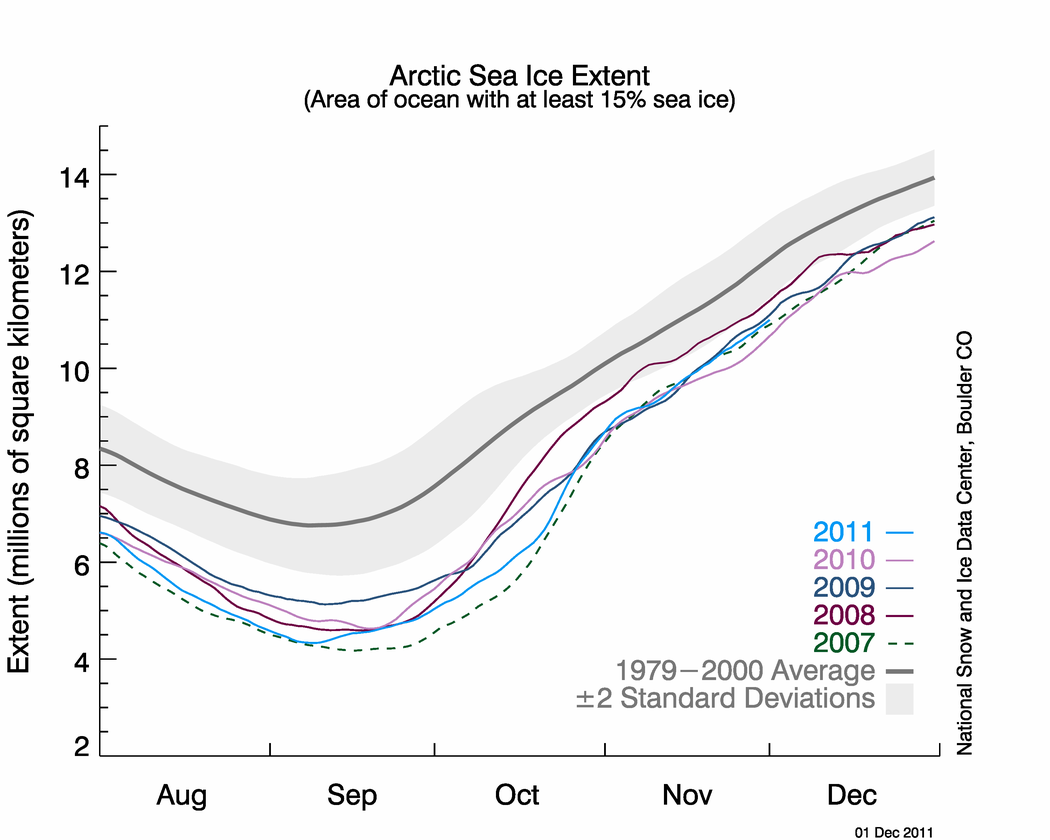So yes, this is going to be the last post for this blog (unfortunately). So refresher's course time!!!!!
The Antarctic is more than 10 times the size of the Arctic Ocean (ice volume).
Both are affected by the recent global warming. There are localised variations in the rates of decrease of ice cover in both poles. Take for example the Antarctic Peninsula, where in some areas glaciers have retreated while there are some that have actually advanced in the same period of time.
Changes in ice cover are not just directly affected by temperature changes, though temperature changes is one of the main drivers of changes in ice extent. Ocean currents, upwelling of warm water, stationary warm water along coasts have also affected changes in ice cover. And also solar forcings have come into play here. Which shouldn't actually be a huge surprise, since sunspots and solar flares have been scientifically proven to affect our climate, albeit on a rather short-term scale.
We've seen the Antarctica from the beginning of the Holocene (12,000 years ago) and the Arctic Ocean (1,450 years ago) and we've seen even more evidence that even in a cool climate (Little Ice Age), other influencing factors have made ice extent in certain areas decrease.
We've also talked about Greenland (though we focussed more on one glacier, which can be used to represent quite a number of glaciers in the region). Greenland's important to our study of the poles since it holds a significant volume of landlocked ice and contributes greatly to the threat of sea level rising.
There's one mislabelled entry 'IPCC's forecast about the Arctic Sea ice melting completely by 2020'. It's actually Dan Miller's interpretation of it) Check out Jonny's blog post that's related to that video. http://66degreeslatitude.blogspot.com/2012/01/i-think-i-need-to-be-more-careful-with.html#comment-form. It's basically about sensationalism in the context of global warming and falsifying facts for personal motives.
And then we had the Durban Climate change talks and Frozen Planet by BBC, which tied in nicely with the aim of my blog and also the current popular debate AGW. Do continue reading the progress on the Durban Climate change deal. It'll be quite a significant progress if it truly succeeds.
And then there's the whole issue of multiyear ice and first year ice, where exposure of multi year ice reflects much about the recovery rates of the glaciers and ice sheets.
Not to forget, we talked about polar bears and other Arctic animals (like in the previous post) being directly affected by the ice and whether or not we should even try to save them. 'Their future looks bleak no matter what we do, so why waste more money' stand: Adopt or not to adopt this stand?
I was going to squeeze in one more post about how the changes in the Arctic Ocean is influenced by atmosphere, sea ice, and ocean and recently, anthropogenic activities from this rather long and technical paper by John E. Walsh titled 'Climate of the Arctic Marine Environment' (2008). Since it basically just reiterates the posts I put up from NSIDC and NASA etc, it isn't that big a loss. But since we've mostly been talking about history, let's take a tiny peek into the predicted future of the Arctic Ocean through this diagram (which is basically self-explanatory) from John Walsh.
Look how small the ice cover is getting from 1980 to the future in 2090!
I hope you gained at least a little bit of knowledge from this blog about the poles. My apologies for not fully covering everything about the poles. If I've somehow managed to spark off your interest in learning about the poles and the environment, NASA and NSIDC websites are a good place to start. They explain diagrams and do not have as much jargon as any scientific article found in a journal, so it's easier to understand.
So with the little bit of knowledge and facts about the poles and what they signify, please put that knowledge to good use. Critically analyse the articles in the news about global warming as well. Not everything out there is the truth.
I'll leave you with this short video about how scientists take cores from the Antarctic for analysis. Just for general knowledge!
Have a great year ahead! Don't miss me too much :)











